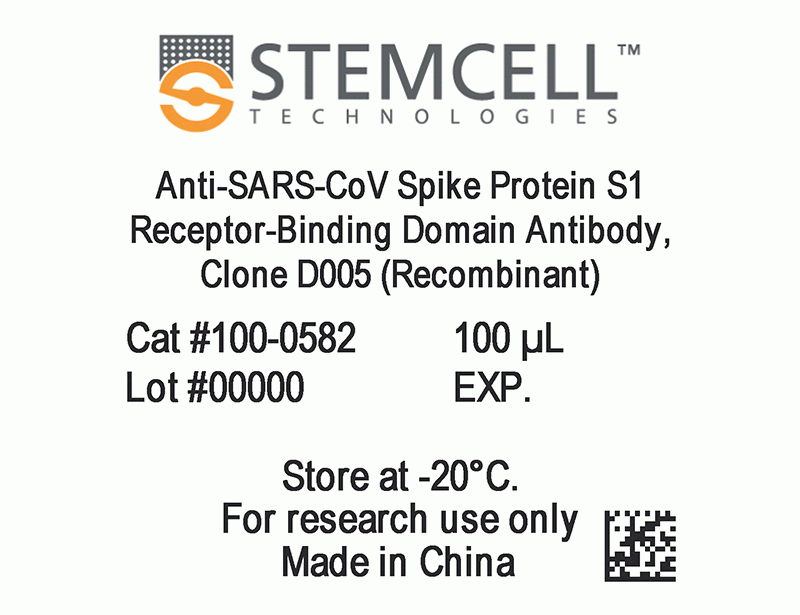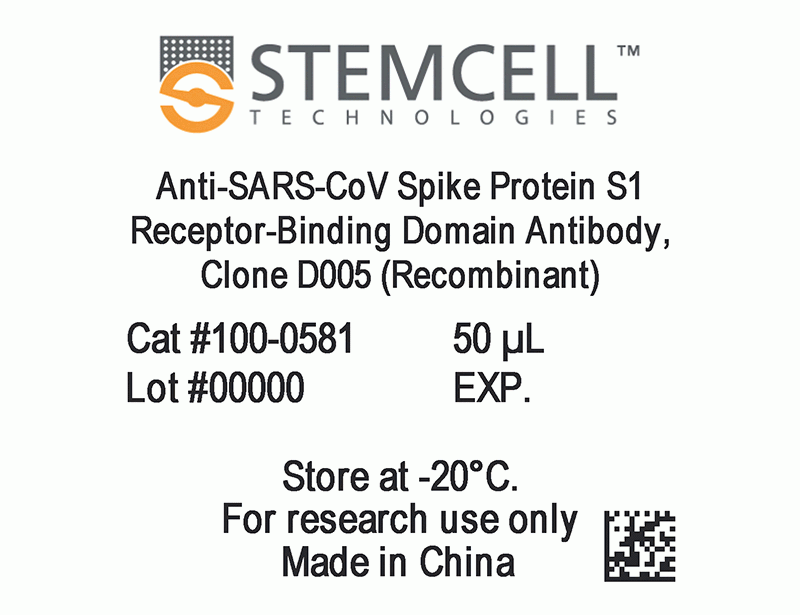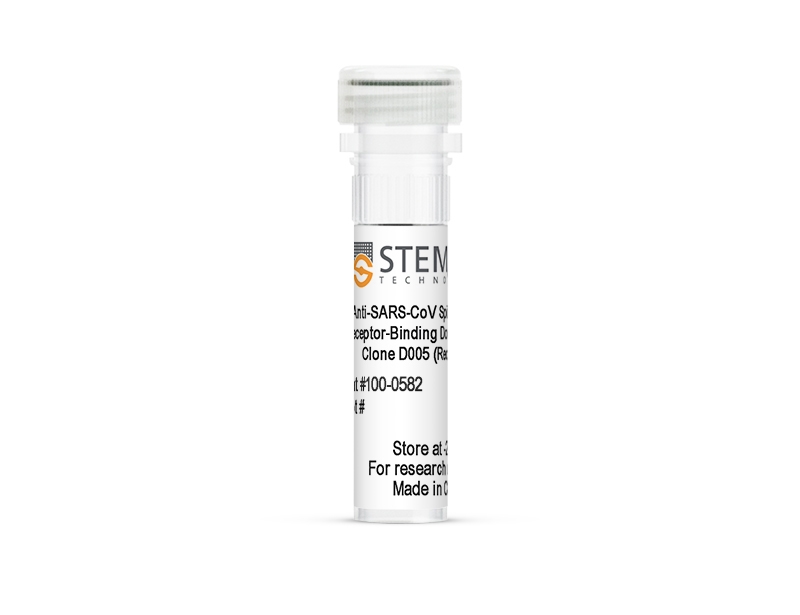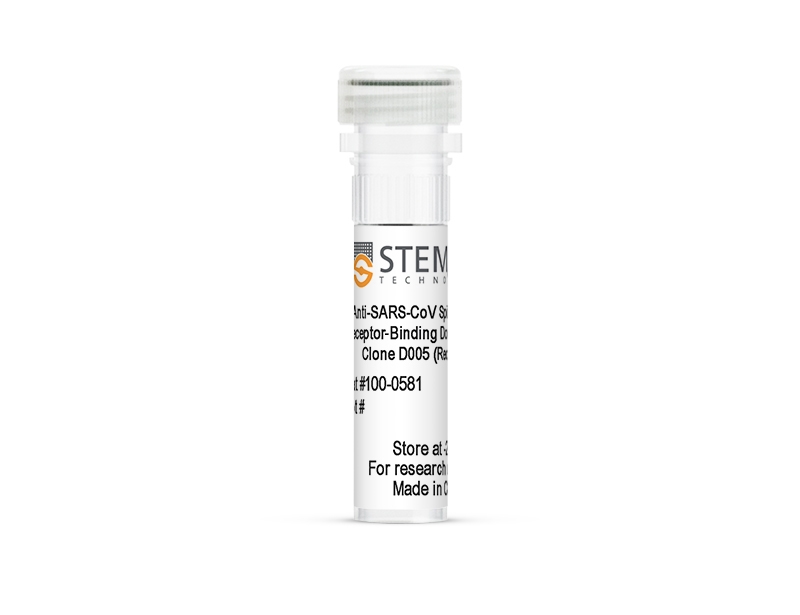Anti-SARS-CoV Spike Protein S1 Receptor-Binding Domain Antibody, Clone D005 (Recombinant)
Chimeric mouse (V), human (C) monoclonal IgG antibody against SARS-CoV, SARS-CoV-2 (2019-nCoV) S protein (HEK293-expressed recombinant)
概要
The Anti-SARS-CoV Spike Protein S1 Receptor-Binding Domain Antibody, Clone D005 (Recombinant) reacts with the Spike Protein S1 receptor-binding domain (RBD) expressed by SARS-associated coronavirus (SARS-CoV) and has shown to cross-react with SARS-CoV-2 (2019-nCoV).
The Spike (S) protein is a type I transmembrane glycoprotein present on the surface of coronaviruses (CoV). Entry of CoV into host cells is mediated by the S protein, where it interacts with the cell-surface receptor angiotensin-converting enzyme 2 (ACE2). In humans, ACE2 is expressed in several organs and tissues, including intestinal and respiratory epithelium.
The S protein has two subunits, S1 and S2, where S1 primarily consists of the 193-amino acid long RBD and the N-terminal domain (NTD). The RBD binds to ACE2, making it the main target for neutralizing antibodies, while the function of the NTD is not well understood. The S2 domain is responsible for membrane fusion. During CoV infection, the S protein is cleaved into the N-terminal S1 subunit and C-terminal S2 subunit by host proteases, transforming its conformation from the pre-fusion to the post-fusion state. The S protein has been shown to play a key role in the induction of neutralizing antibody and T cell responses, which may lead to protective immunity.
The Spike (S) protein is a type I transmembrane glycoprotein present on the surface of coronaviruses (CoV). Entry of CoV into host cells is mediated by the S protein, where it interacts with the cell-surface receptor angiotensin-converting enzyme 2 (ACE2). In humans, ACE2 is expressed in several organs and tissues, including intestinal and respiratory epithelium.
The S protein has two subunits, S1 and S2, where S1 primarily consists of the 193-amino acid long RBD and the N-terminal domain (NTD). The RBD binds to ACE2, making it the main target for neutralizing antibodies, while the function of the NTD is not well understood. The S2 domain is responsible for membrane fusion. During CoV infection, the S protein is cleaved into the N-terminal S1 subunit and C-terminal S2 subunit by host proteases, transforming its conformation from the pre-fusion to the post-fusion state. The S protein has been shown to play a key role in the induction of neutralizing antibody and T cell responses, which may lead to protective immunity.
Subtype
Primary Antibodies
Target Antigen
SARS-CoV Spike Protein S1 Receptor-Binding Domain
Alternative Names
SARS-CoV Spike Protein, SARS-CoV S Protein, SARS-CoV S1 Protein
Conjugation
Unconjugated
Host Species
Mouse
Application
ELISA, Flow Cytometry, Immunocytochemistry, Immunofluorescence, Immunohistochemistry, Immunoprecipitation
Area of Interest
Immunology, Infectious Diseases, Respiratory Research
Clone
D005
Gene ID
N/A (GenBank: AAX16192.1)
Isotype
IgG1 (human), kappa (mouse)
技术资料
| Document Type | 产品名称 | Catalog # | Lot # | 语言 |
|---|---|---|---|---|
| Product Information Sheet | Anti-SARS-CoV Spike Protein S1 Receptor-Binding Domain Antibody, Clone D005 (Recombinant) | 100-0581, 100-0582 | All | English |
数据及文献




